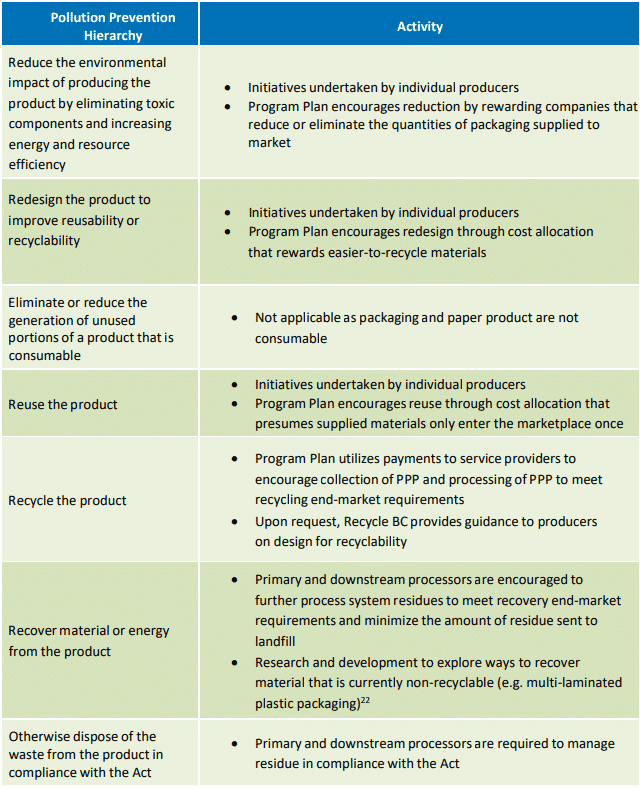We recently received an email from Ms. Martin’s class who are learning to “reduce, reuse, recycle” and we thought this was a great opportunity to share some information about the pollution prevention hierarchy.
The Recycle BC program adheres to the pollution prevention hierarchy — a series of steps to manage waste, in order of the preferred approach. It’s a great way to take into account the “reduce, reuse, recycle” principles when making consumption choices in your everyday life. Here are some tips:
Avoid and Reduce:
- If you’re having a drink or meal in a restaurant or café, don’t get your treats in ‘to-go’ containers. Sit, relax and enjoy the experience of using real tableware and cups.
- When printing documents from your computer or laptop, print double-sided – half as much paper for the same amount of printing.
- Avoid single-use items like plastic straws, paper cups, plastic bags, plastic cutlery – they’re convenient, but try substituting them with reusable items whenever possible:
- Use reusable lunch containers instead of plastic wrap or disposable baggies.
- Bring reusable bags with you when you go shopping.
- If you love straws, invest in a reusable one so you don’t need a single-use plastic one each time.
- Remember a reusable water bottle or travel mug for on-the-go water and coffee fills.
- Use items that are made for ongoing use like cloth napkins vs. paper napkins, or dishcloths vs. paper towels.
Reuse:
- Donate durable goods to a good cause so someone else can use them.
- Look in second-hand stores to find the items you need.
- Join a sharing community like the Tool Library or Quupe, or ask your neighbour to borrow an item you need
- Learn to reuse products in different ways to give them more use before recycling:
- For example, plastic microwave dinner trays can be used as picnic dishes
- When purchasing products, opt for items that are made from recycled materials
Recycle:
- Take a few moments to know what can be included in your home recycling and what shouldn’t be included. It makes a big difference in the next step of the recycling process.
- Sort it out! Not only is it important to know what can be recycled, it’s important to know where it should be recycled – whether it’s plastic containers, metal cans, cartons, or paper packaging take a moment to ensure you’re putting it in the right bin. The Recycle BC app can help with that.
- When you’re doing your errands, include a trip to the depot or London Drugs store to return your plastic bags and overwrap, foam packaging and other flexible plastic packaging.
Below is an excerpt from Recycle BC’s packaging and paper stewardship plan showing Recycle BC’s role in the pollution prevention hierarchy as it relates to our program:



